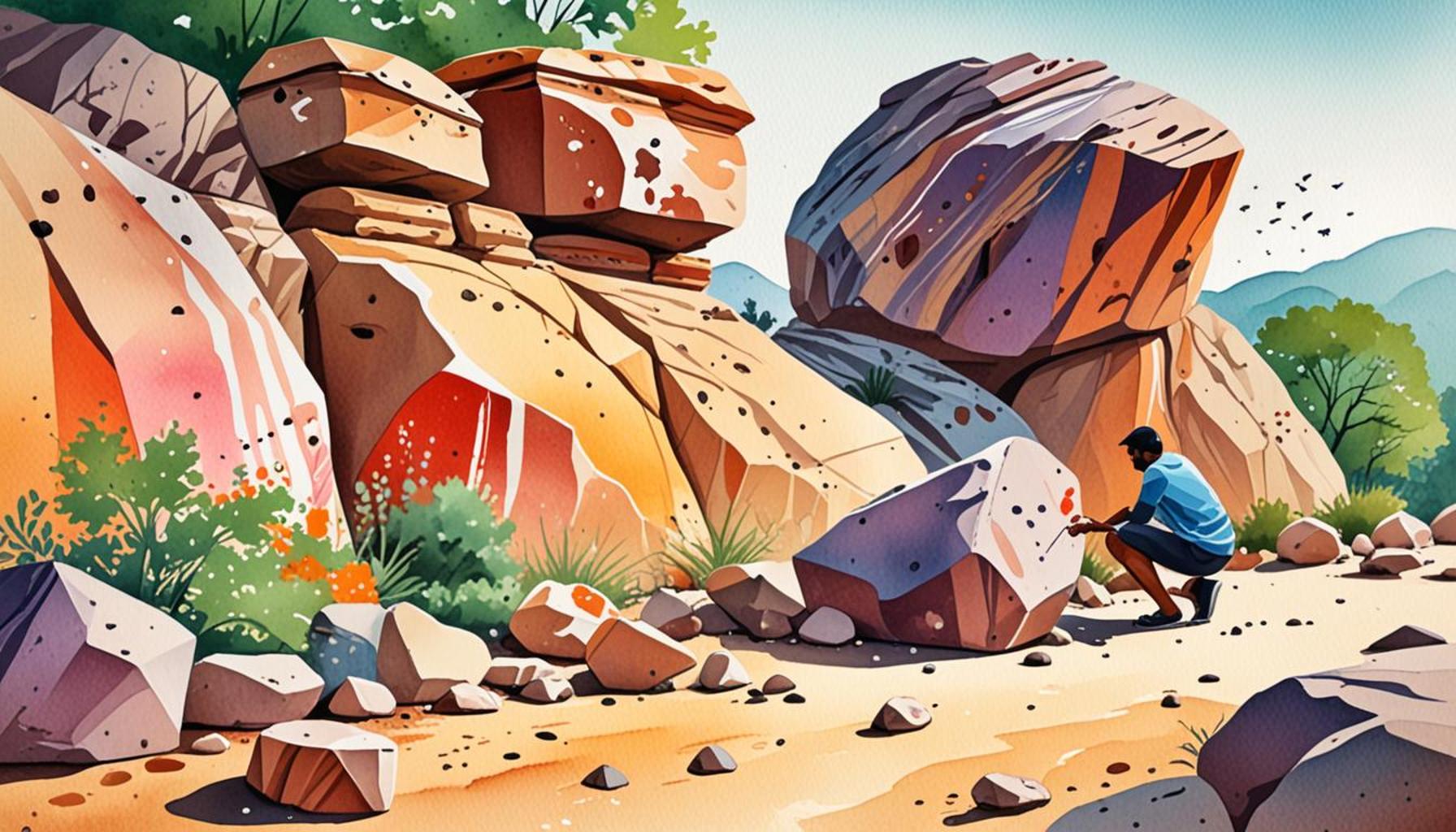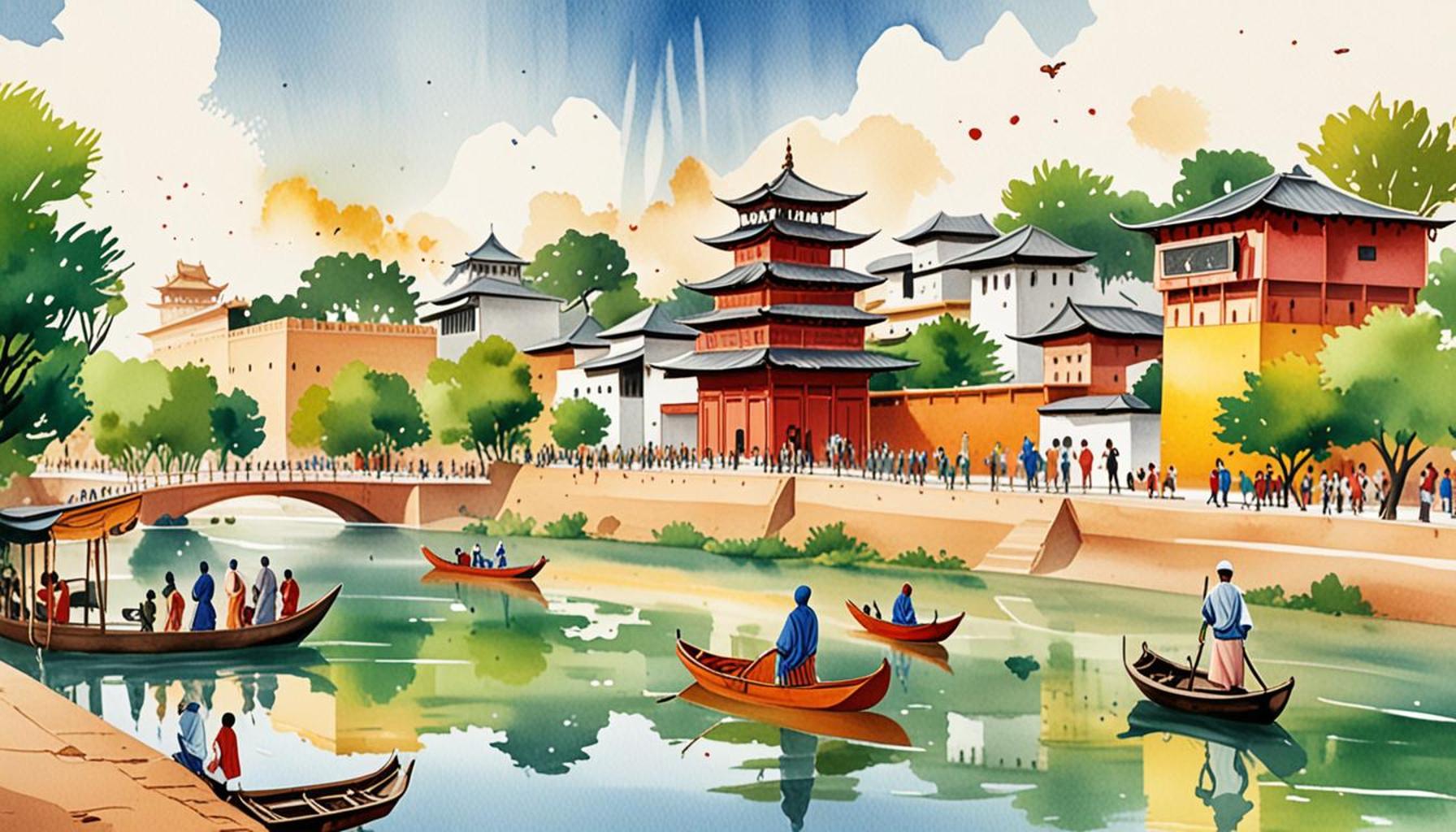Exploring Rock Art in Oyo: An Outdoor Cultural Itinerary

Unveiling the Artistry of Oyo’s Rock Canvas
Oyo State’s mesmerizing rock art stands as a testament to the region’s rich cultural heritage. These ancient carvings are etched into the natural rock formations, forming a striking gallery that showcases the creativity and spirituality of civilizations long past. As visitors meander through this historical terrain, they are transported into a world where artistry and storytelling intertwine, offering profound insights into the life and beliefs of the indigenous Yoruba people.
The journey begins with the breathtaking rock formations. These geological wonders, such as the iconic Olumo Rock and the intriguing Ayepe Rock, provide not only stunning vistas but also serve as canvases for myriad artistic expressions. The engravings found here vary from intricate animal figures to geometric patterns, each telling a story or depicting a scene. For instance, some carvings are believed to represent significant events or rituals, serving as a visual documentation of the community’s history, while others invoke deities and natural spirits, providing a glimpse into the spiritual life of the Yoruba.
Exploring the cultural significance of these artworks, we find they are deeply embedded in the beliefs and traditions of the region. Art was not merely for aesthetic pleasure; it played a key role in social cohesion, religious practice, and the passing down of history. Each carving and engraving conveys complex meanings, inviting viewers to ponder their significance. One fascinating example includes the depictions of ancestral figures, which illustrate the Yoruba’s veneration for their ancestors, emphasizing the importance of lineage and heritage.
The adventure of exploring these sites is enhanced by the lush landscapes that envelop Oyo. Visitors can enjoy hiking trails that wind through verdant forests and scenic vistas, leading to hidden rock art sites where nature and history meet. Notable spots such as the Isokun Rock Art site not only offer a chance to see the stunning art itself but often are accompanied by local guides who share stories and folklore, enriching the experience with personal insights.
Beyond a visual feast, Oyo’s rock art provides an educational experience that fosters a connection between the present and the past. Engaging with these ancient masterpieces invites visitors, both local and international, to reflect on their origins and meanings. This outdoor cultural itinerary not only celebrates the artistic legacy of the region but also encourages a dialogue about the preservation of history and culture in the face of modernity. As such, a visit to Oyo State is more than just sightseeing—it’s an invitation to appreciate a vibrant tapestry of art, history, and human experience.

YOU MAY ALSO LIKE: Read read another article
The Journey Through Ancient Symbolism
As you embark on the quest to explore rock art in Oyo, prepare to delve deep into a world shaped by ancient hands and visionary spirits. Rock art, often regarded as one of the earliest forms of communication, serves as a window into the socio-cultural frameworks of ancient Nigerian civilizations, particularly the Yoruba. Through these etched symbols and images, significant narratives about life, survival, and reverence to the divine come alive. A journey through Oyo’s rock art sites promises not only breathtaking visuals but also enriching tales waiting to be uncovered.
Among the most notable sites is the Olumo Rock gallery, a prominent landmark that attracts history enthusiasts and adventure lovers alike. The towering rock formation, with its stunning panoramic views, acts as both a natural fortress and an outdoor museum. Here, visitors can examine carvings dating back centuries, where animal figures and ancestral spirits mingle harmoniously, revealing the intricate beliefs surrounding the mythology and heritage of the Yoruba people. The experience of climbing Olumo Rock and witnessing these ancient artworks in their natural habitat is unparalleled, allowing for intimate moments of reflection about one’s connection to the past.
Another hidden gem to explore is Awaye Cave, a lesser-known yet equally intriguing site. Nestled within a lush forest, this cave contains striking rock engravings that showcase the traditional symbols that were foundational to Yoruba culture. The breathtaking surroundings and the historical significance of Awaye Cave make it a perfect spot for wanderers who appreciate both beauty and knowledge. Visitors often report a sense of peace overcoming them as they connect with the echoes of the past amidst the serene atmosphere.
To enhance your experience, engaging local guides can further illuminate the historical and cultural context behind these works of art. Their stories bring the carvings to life, revealing how they reinforce shared values and social structures within the Yoruba community. Additionally, guides can offer profound insights into the meanings of various symbols, such as:
- Animal Figures: Representations of strength and community, often depicting the importance of wildlife in sustaining cultural practices.
- Geometric Patterns: Symbolic designs that convey messages of harmony and balance, reflecting the Yoruba worldview.
- Depictions of Deities: Carvings that are crucial for religious rites, believed to invoke supernatural support in daily life.
The experience of viewing these artworks amidst nature fosters a profound connection, reminding visitors that these remnants of the past are not merely decorative; they embody the essence of Yoruba identity. As Oyo State opens its arms to adventurers ready to explore its rich history, the rock art stands unwavering, inviting new generations to engage with its poignant stories. Indeed, the rock art of Oyo is a rallying point for cultural dialogue, bridging the gap between tradition and modernity.
| Advantage | Description |
|---|---|
| Cultural Heritage | Oyo’s rock art is a window into the region’s cultural history, showcasing ancient traditions and storytelling. |
| Outdoor Adventure | Exploring rock sites offers a unique way to combine nature and exploration with cultural learning, making it ideal for adventure seekers. |
As visitors embark on an outdoor cultural itinerary in Oyo, they are invited to discover the breathtaking landscapes that frame its rock art. The journey is not just a hike but a stepping into a narrative that connects generations. Local guides often weave tales of the significance of each artwork, transporting visitors back to a time when these illustrations served as crucial historical markers for communities.One of the renowned sites is the Central Nigeria, where the rock art flourishes amid stunning geographic formations. This locale acts as both a prime tourist spot and an essential conservation area, emphasizing the need for sustainable tourism. Notably, the rock engravings serve as a reminder of the cultural values that have shaped the local identity.Additionally, engaging in this exploration prompts visitors to appreciate the fusion of archaeology and anthropology evident in the rock art. It becomes an educational experience that highlights the importance of preserving such treasures for future generations. The melodies of nature intertwine with historical narratives, offering a holistic experience that enriches the soul and ignites curiosity in the beauty of the African heritage.
RECOMMENDED: Check out this similar article
Journey of Discovery: Marvelling at the Techniques
The adventure of exploring rock art in Oyo is not just about witnessing ancient symbols; it is also an opportunity to appreciate the artistic techniques that early Yoruba artisans employed to carve their narratives into stone. Understanding these methods unveils the resourcefulness and creativity of our ancestors. For instance, the application of percussive techniques—using tools made from stone or hardwood—enabled artisans to create intricate designs, demonstrating both skill and perseverance. The choice of rock surfaces played a significant role, as varieties like basalt and quartzite provided different textures and durability.
In addition to meticulous carving, the use of natural pigments, including ochre, charcoal, and mineral-based paints, often accompanied these artworks. This practice indicates a profound understanding of their environment, where colors not only adorned the artworks but also might have held symbolic meanings linked to fertility, nature, and spiritual healing. Visitors at rock art sites like Idanre Hills can spot remnants of these pigments, opening a dialogue on how the integration of art and nature was essential to Yoruba philosophy—a testament to the sustainable practices that prevailed long before modern methods.
Moreover, storytelling is vital in rock art interpretation, as each engraving is often connected to oral traditions that have transcended generations. For instance, the carvings in sites like the Oyo-Ile Palace encapsulate legends about ancient kings and heroic figures who shaped the cultural landscape of Oyo. Engaging with local storytellers and cultural historians enhances the experience significantly. They provide context that enriches your understanding and appreciation, relaying tales of how the spirits depicted in the carvings once walked the earth and maintained their relevance to contemporary Yoruba metaphysics.
Community Engagement and Conservation
The exploration of rock art is intertwined with the efforts of local communities to conserve these precious sites. Organizations within Oyo State actively work towards the preservation of rock art, promoting awareness of their historical significance not only for local pride but also for cultural tourism. Participating in community-led conservation initiatives allows visitors to engage with the local populace, experiencing the shared responsibility of safeguarding heritage. For instance, programs that involve painting restoration and site clean-up highlight the community’s dialogue with their past while ensuring that the stories embedded in their land continue to inspire future generations.
The advent of technology has further enriched the experience of exploring rock art in Oyo. Some sites now offer augmented reality tours, where visitors can use their mobile devices to view animations or listen to stories about the artwork they are seeing. This innovative approach fosters deeper connections with the past, especially for younger generations who may be more inclined toward digital engagement.
As your journey continues, consider taking a moment to reflect on the broader implications of rock art exploration—how these ancient images not only tell stories of the Yoruba past but also carry lessons pertinent to today’s cultural identity and communal harmony. Collectively, this journey through Oyo’s vibrant rock art is more than an itinerary; it is a cultural pilgrimage that allows all who partake to reconnect with time-honored traditions in a modern context.
LEARN MORE: This related article may interest you
Conclusion: The Enduring Legacy of Rock Art in Oyo
In conclusion, exploring rock art in Oyo presents a captivating intersection of history, culture, and creativity, deeply woven into the fabric of Yoruba heritage. Each carving, painting, and symbol speaks volumes about the lives and beliefs of the ancestors who shaped this land. By examining the techniques used in these artworks, visitors gain insight into the resourcefulness of early artisans and the intricate relationship between art and the natural environment. This cultural itinerary offers not just a glimpse of the past but serves as a vibrant reminder of the importance of preserving and celebrating such legacies for future generations.
Furthermore, engaging with local communities enhances the experience, fostering a spirit of cooperation that is crucial for the conservation of these historic sites. The initiatives aimed at protecting rock art signify a shared responsibility that transcends individual experience, reinforcing community bonds and promoting cultural tourism. As technology continues to evolve, tools like augmented reality enrich visitor experiences, making these ancient stories accessible to all age groups and ensuring they remain relevant in today’s world.
Thus, the adventure of exploring Oyo’s rock art is more than mere observation; it is a journey of connection to a rich cultural lineage that invites reflection on contemporary values and identities. Whether it is through the legends of the Oyo-Ile Palace or the vivid colors of Idanre Hills, each encounter with rock art serves as an invitation to delve deeper into the enduring narratives that shape not just Oyo, but the very essence of Nigerian culture. As such, the exploration of rock art should be embraced as an enriching path to understanding our shared human heritage.


